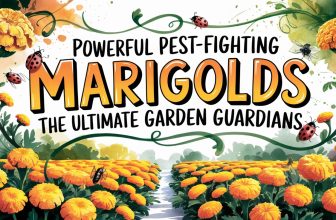Master the Art of Landscape Design With These Expert Tips
Landscape design is a multifaceted discipline that demands a keen eye for detail and a thoughtful approach to space.
Every element within a landscape, from the positioning of trees and structures to the selection of plants and lighting, plays a pivotal role in shaping the overall ambiance and functionality of an outdoor environment.
This article delves into the intricate world of landscape design, offering expert insights and practical tips to help you create a well-planned and aesthetically pleasing outdoor space.
By exploring the significance of various design features and the art of harmonizing them, this discussion aims to provide a comprehensive understanding of the principles that underpin successful landscape design.
Importance of Planning and Designing
Planning and designing are essential components of creating a successful and well-executed landscape, ensuring a harmonious and functional outdoor space.
When considering designing strategies, maximizing space is crucial. By strategically planning the layout and incorporating structures such as decks, patios, and gazebos, one can effectively maximize the available space.
Additionally, considering the mature size and growth rate of trees, as well as integrating garden rooms and curved garden beds, can further optimize the utilization of space.
Paths and curves not only enhance the visual appeal but also provide functional walkways, contributing to a well-utilized landscape.
Furthermore, incorporating gates, arbors, and focal points into the design not only adds aesthetic value but also helps define and segment the outdoor space effectively.
Considerations for Trees and Garden Rooms
When considering the layout of a landscape, thoughtful consideration of the placement and characteristics of trees and the incorporation of garden rooms are essential for creating a well-utilized and visually appealing outdoor space.
- Mature Tree Placement: Carefully assess the mature size and growth rate of trees to avoid future conflicts and overcrowding.
- Creating Secret Gardens: Utilize garden rooms to divide the yard into sections, creating a sense of privacy and a hidden, secret garden atmosphere.
- Strategic Planting: Plan for trees in advance to determine suitable plants around them and ensure they provide shade and influence the growth of other plants.
- Room Dividers: Utilize physical structures, defined areas with plants, or curved garden beds to create natural room dividers and add an element of surprise to the overall design.
- Visual Appeal: Incorporating garden rooms and mature trees adds interest and enhances the overall aesthetic appeal of the landscape.
Importance of Paths and Curves
Incorporating paths and curves into the landscape design not only enhances the overall aesthetic appeal but also serves to provide defined walkways and guide visitors through the garden, creating a sense of direction and purpose. Creating curved walkways adds a natural and visually pleasing look, contributing to the overall flow and harmony of the garden. Curved garden beds can also serve as natural room dividers, adding an element of surprise to the design. Whether in formal or modern garden designs, curves contribute to the interest and flow of the landscape. Additionally, mowing along curved edges is easier compared to straight lines, making maintenance more efficient. The table below outlines the benefits of incorporating paths and curves into landscape design:
| Benefits of Paths and Curves |
|---|
| Enhances aesthetic appeal |
| Provides defined walkways |
| Guides visitors through the garden |
| Creates a sense of direction and purpose |
| Easily maintained and visually pleasing |
These elements are essential for designing natural garden beds and achieving a harmonious and balanced overall look.
Incorporating Gates, Arbors, and Focal Points
How can gates, arbors, and focal points contribute to the overall visual appeal and functionality of a landscape design?
- Metal vs. Wood: Choosing the Right Material for Gates and Arbors
- Arbors as Focal Points: They act as built-in focal points, framing the landscape.
- Gates for Enclosure: Create defined entryways and add a sense of enclosure.
- Creative Focal Points: Statues and unique fence designs can serve as focal points.
- Visual Interest: Focal points draw attention and contribute to the overall aesthetics of the landscape.
When considering gates and arbors, the choice between metal and wood is crucial for the overall design. Arbors, besides their functional role, serve as focal points, enhancing the visual appeal.
Meanwhile, gates provide a touch of mystery and can partially obscure the view, adding an element of surprise.
Creative focal points, such as statues and unique fence designs, further contribute to the overall visual interest of the garden.
Importance of Lighting
The visual appeal and functionality of a landscape design can be further enhanced through the strategic incorporation of lighting elements, complementing the focal points, gates, and arbors previously discussed.
Choosing the right fixtures is crucial to create a nighttime ambiance that highlights the beauty of the landscape. Lighting adds drama and highlights focal points in the yard after dark, creating a captivating atmosphere.
Many people overlook lighting in their landscape design, but it can significantly impact the overall aesthetics.
Hooking up electrical wires for lighting is easier than one might think, and landscape lighting can even be a DIY project.
Choosing the Right Plants
When designing a landscape, selecting the right plants is a pivotal step that directly influences the success and visual impact of the overall design. Proper plant selection is essential for creating a cohesive and visually appealing garden.
Here are some key considerations for plant selection:
- Consider the local climate and soil conditions when choosing plants.
- Pay attention to the mature size, growth rate, and maintenance requirements of the plants.
- Select plants with varying colors, textures, and seasonal interest to add visual diversity to the landscape.
- Incorporate native and drought-tolerant plants to promote sustainability and reduce water usage.
- Understand the specific characteristics and needs of each plant to ensure they thrive in their designated environment.
Careful consideration of these factors will contribute to a well-balanced and harmonious landscape design.
Seeking Professional Help
In the pursuit of creating a well-balanced and visually appealing landscape design, enlisting the assistance of a professional landscaper can significantly contribute to the realization of your garden vision.
The benefits of hiring a landscaper are multifaceted. A professional brings expertise and experience, ensuring a successful landscape design while saving time and avoiding costly mistakes. They provide valuable advice on plant selection, layout, and maintenance, tailored to your specific location and preferences.
However, finding the right professional is crucial. It's essential to research and choose a reputable landscaper with positive reviews and a portfolio of previous work.
Working with a professional can help you achieve your vision for your dream garden, making the process smoother and more rewarding.
Scale and Proportion
Considering the appropriate scale and proportion of elements in your landscape design ensures a harmonious and balanced overall look. Adhering to garden design principles and creating visual balance are essential for an aesthetically pleasing outdoor space. Here are key points to consider:
- Scale and proportion establish the relationship between various elements in the landscape.
- Proper scaling ensures that elements complement each other without one overpowering the rest.
- Emphasizing visual balance creates a sense of equilibrium throughout the design.
- Large elements should be balanced with smaller ones to avoid visual dominance.
- Utilizing scale and proportion effectively leads to a cohesive and visually appealing landscape design.
Adding Interest and Shape
How can landscape design incorporate elements to add interest and shape, ensuring a visually captivating outdoor space? Incorporating structures and features can enhance the overall aesthetic appeal of a garden. By creating focal points and utilizing vertical space, a landscape can become visually captivating and dynamic. The table below provides examples of elements that can be utilized to add interest and shape to a garden:
| Elements | Description |
|---|---|
| Arbors | Create defined entryways and add enclosure |
| Gates | Contribute to the creation of garden rooms |
| Statues | Serve as focal points and draw attention |
| Trellises | Utilize vertical space for climbing plants |
Frequently Asked Questions
How Can I Incorporate Sustainable and Eco-Friendly Practices Into My Landscape Design?
Incorporating sustainable and eco-friendly practices into landscape design involves utilizing sustainable materials, prioritizing water conservation, and incorporating native plants.
Opt for sustainable materials like recycled wood and composite decking to reduce environmental impact.
Emphasize water conservation by implementing rainwater harvesting and drought-tolerant landscaping.
Utilize native plants to minimize water usage and maintenance.
Additionally, integrate energy-efficient lighting to reduce energy consumption and promote a sustainable landscape.
What Are Some Creative Ways to Incorporate Water Features Into My Garden Design?
Innovative water features can elevate your garden design. Consider incorporating garden pond designs to create a serene and captivating atmosphere.
Waterfalls, fountains, and stream beds add movement and tranquility. Additionally, integrating water into your landscape encourages biodiversity and provides a natural habitat for aquatic plants and animals.
Thoughtfully designed water features can also contribute to sustainable water management and conservation.
Are There Any Innovative Technologies or Smart Solutions That Can Be Integrated Into Landscape Design?
Innovative technologies and smart solutions have revolutionized landscape design, offering sustainable and efficient options.
Green technology, such as solar-powered lighting and irrigation systems, reduces environmental impact and energy consumption.
Smart solutions, including automated irrigation controllers and weather-based sensors, optimize water usage in outdoor spaces.
Integration of these technologies not only enhances sustainability but also elevates the functionality and aesthetics of landscape design, reflecting a commitment to environmental stewardship.
What Are Some Tips for Designing a Low-Maintenance Landscape That Still Looks Beautiful?
When designing a low-maintenance landscape that retains its beauty, consider incorporating low maintenance plants and drought-resistant landscaping. Opt for native plants and succulents which require minimal watering and upkeep.
Incorporate mulch to retain moisture and suppress weeds. Utilize hardscaping elements such as gravel and stone to minimize the need for regular maintenance.
Additionally, consider installing an irrigation system to ensure water efficiency. These strategies will help create a visually stunning landscape while minimizing upkeep requirements.
How Can I Create a Landscape Design That Is Both Functional and Aesthetically Pleasing for Outdoor Entertainment and Gatherings?
To create a landscape design functional and aesthetically pleasing for outdoor entertainment and gatherings, consider incorporating functional furniture and seating arrangements that facilitate social interaction.
Outdoor lighting can add ambiance and extend usability into the evening.
A well-designed fire pit can serve as a focal point and provide warmth.
Careful arrangement of these elements within the landscape can ensure an inviting and practical space for outdoor enjoyment.
Conclusion
In conclusion, mastering the art of landscape design requires careful planning and attention to detail.
By understanding the importance of various features, plant selection, lighting, and seeking professional guidance, individuals can create a well-planned and beautifully designed outdoor space.
Whether embarking on a DIY project or collaborating with professionals, the knowledge shared in this article empowers individuals to transform their outdoor environments into stunning and functional living spaces.
Disclaimer: GardeningNorm is a participant in the Amazon Services LLC Associates Program and may receive a commission if you purchase a product via a link on this page.. However, this does not impact our reviews.Read the full disclosure here.



